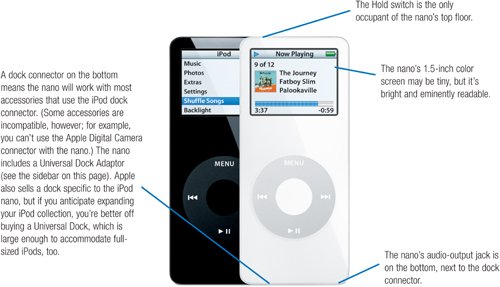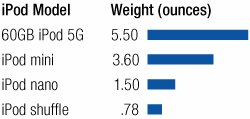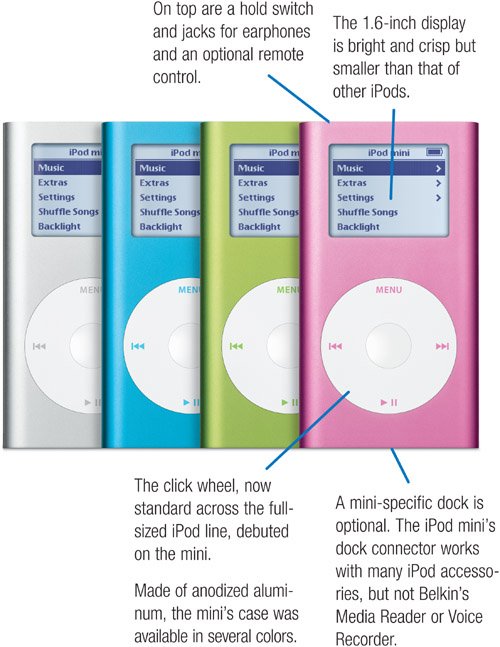The Compact iPods: mini and nano
| Honey, I shrunk the iPodthat about sums up the iPod mini and iPod nano. Both have most of the talents of their bigger brethren, but are much more compactor, in the case of the nano, much, much more compact. The iPod mini was the first of Apple's petite iPods. It's no longer made, but if you crave a pink iPod, a visit to eBay will probably turn up plenty. Like full-sized iPods, the mini contained a hard drive. Functionally, its features match those of the 4G iPods. The mini can't store photos or videos. As for the iPod nano, it makes the mini look maxi. Its compact size is due in part to its use of flash memorythe same type of memory used by your digital camerainstead of a hard drive. And while the nano may be a fraction of the size and half the weight of the mini, it does more you can store photos on it and view them on its tiny screen. (Alas, you can't connect the nano to a TV set for photo display.) All of the general iPod techniques described in this section apply to the mini and the nano. Here's a look at what's different about these compact iPods. iPod mini About the height and width of a business card, the iPod mini debuted in January 2004 with a 4GB capacity. In February 2005, Apple added a 6GB model and changed the available colors. Like the latest full-sized iPods, the iPod mini provides a customizable main menu, editable on-the-go playlists, and the ability to speed-shift audiobooks (page 101). Many of these capabilities arrived with a November 2004 software update; if you have an older mini, download the latest iPod updater from Apple's Web site. iPod nano Introduced in September 2005, the iPod nano packs most of the features of the full-sized iPods into a package that Apple accurately describes as "impossibly small." At this writing, the nano is available in 1GB, 2GB, and 4GB capacities. You can expect roughly 14 hours of continuous play on a single battery charge. (Caffeine not included.) 
|

